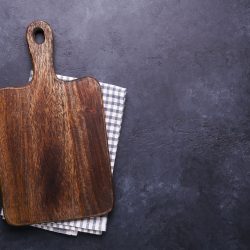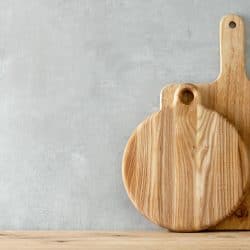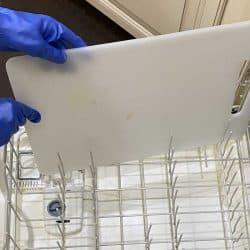Wood cutting boards look nice and perform well—most of the time. In some cases, they might start splintering all over the place. Why is that? If that's your concern, we've researched the topic to give you some answers!
There are several reasons why a wooden cutting board would splinter. Maybe you've washed an untreated cutting board. Or perhaps you forgot to season it after a month, so you're using it without a layer of protection.
In most cases, it's a problem with constant exposure to moisture.
You don't have to worry if your cutting board is splintering. Restoring it to good shape is only a few steps away. Before we cover that, it helps to know what exactly is causing the problem.
If you'd like to learn more about this, keep reading.
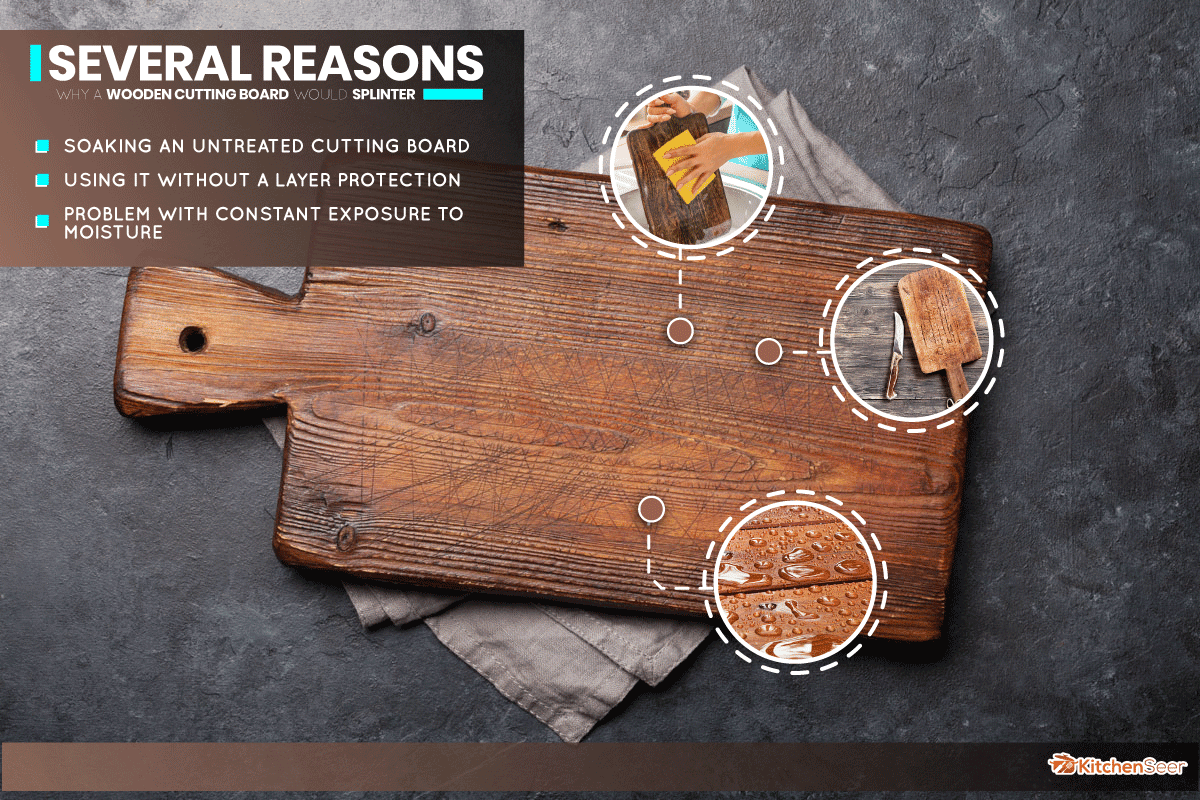
What Makes A Wood Cutting Board Splinter?
The first step towards fixing the splintering is finding the source of the problem. We can start by taking a look at our actions. For example, how do you wash your cutting board?
If you say by putting it in the dishwasher, that's a mistake we should avoid doing. Water and extreme heat don't mix well regarding wood. Wood swells when it's submerged in water.
Once it dries, it contracts. However, it's drying at a fast rate in the dishwasher. So, the drying process will make it splinter. Instead of using the dishwasher, wash the cutting board by hand.
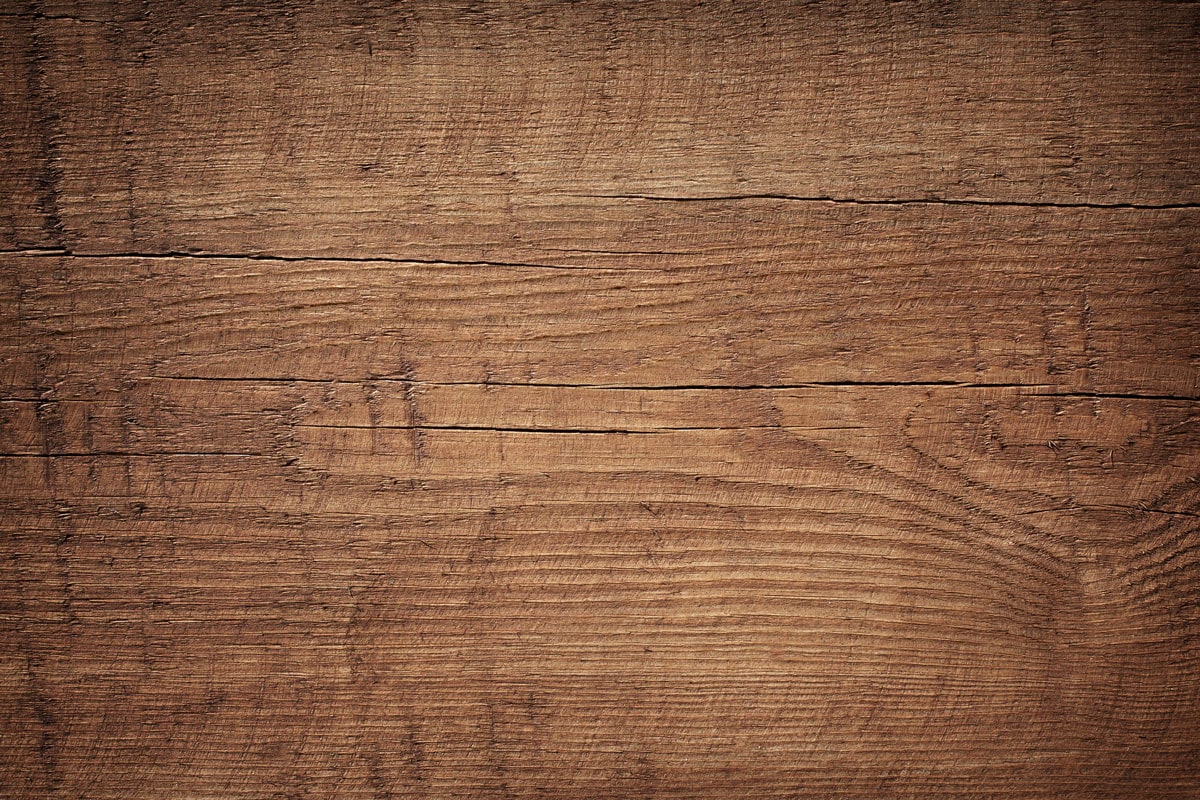
Soaking The Cutting Board
Those who don't own a dishwasher will have to wash the cutting board in the sink. It's not as harsh as a dishwasher, but consistently washing it the wrong way will damage the wood eventually.
In this case, drenching the cutting board in water is a bad idea. By drenching, we don't mean rinsing the board under the sink for a bit too long. Submerging it in a water-filled sink is a mistake.
Water excels at absorbing liquid. Therefore, not only is it getting wet on the surface, it's getting wet internally too. Frequently soaking a wooden cutting board in water can cause warping, rotting, or cracking.
Not Seasoning The Cutting Board
You aren't supposed to use a wooden cutting board in its raw form. There should be a layer of protection on the surface. If the cutting board absorbs water, it doesn't have a finish.
Thus, you might've been using an untreated cutting board. One way you can test it is by pouring water on the surface. If the water beads, the cutting board has a finish. Otherwise, the water will disappear into the wood.
If you didn't know, you should apply an oil coating over the cutting board once in a while. How often you do it depends on how much you use it. So, frequent users should probably apply a coating every month.
Those who don't use it often can wait longer. Recoat it two to three times a year. This problem may also apply to new wooden cutting boards.
Some of them may come without a finish. Instead, the manufacturer leaves it up to the customer to choose the finish they want. Otherwise, it could be a rare case of a bad oil application.
What Can You Do?
Whatever the problem may be, it doesn't take much to fix the problem. You have two options: return it if it's new or sand it and apply a finish.
The easiest solution would be to return the cutting board and purchase one with a finish. However, you'll need to apply a finish in the future. So, it might be worth considering sanding it and applying a finish.
In any case, let's discuss how to remove the splinters.
Preparing the Cutting Board
If you're removing splinters from an old wooden cutting board, it needs extensive cleaning first. Otherwise, you'll be trapping contaminants inside, which can lead to other problems.
You can remove odors using a tablespoon of baking soda and a teaspoon of water; it forms a paste you can spread with a sponge.
Then, wash it with hot soapy water. At this point, you can start the restoration process with a clean slate. Before we get to sanding, let the cutting board dry thoroughly.
Sanding the Cutting Board
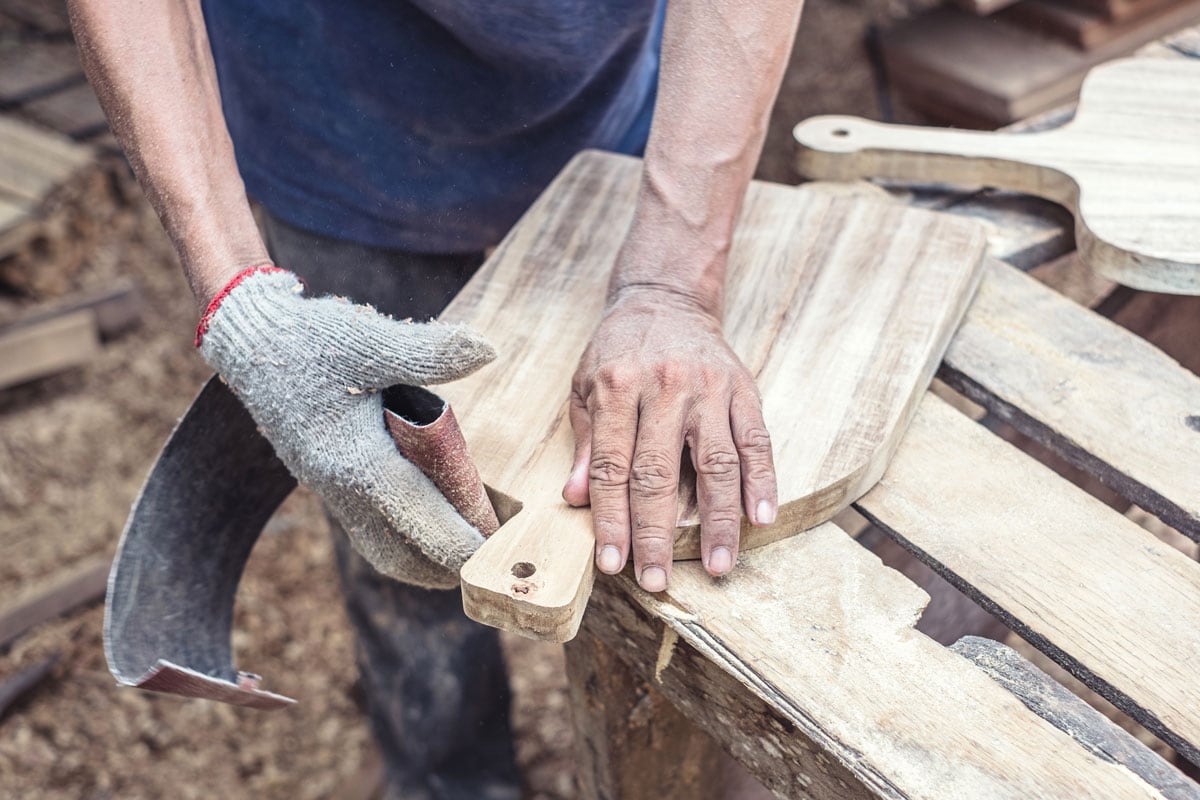
Before you start the process, there are some tools you'll need: sandpaper, mineral oil, and a cloth. For this process, you'll need 80-grit, 120-grit, and 220-grit sandpaper.
Click here to see this sandpaper on Amazon.
You may use a sanding block, orbit sander, or sandpaper. It doesn't matter which you choose. As long as you have a good grip on it, it should work well.
If you've washed the cutting board recently, wait a day or so before you sand it. This way, you can let it dry completely. Otherwise, you'll be trapping moisture inside after applying a layer of oil.
Sanding with 80-grit Sandpaper
Start sanding with 80-grit sandpaper; sand with the grain. You only need to do this for a few minutes. We're focusing on removing the splinters from the surface.
Once satisfied with the results, wipe off the wood dust with your hand or a brush. There will be more dust you'll need to remove. So, take a damp sponge or cloth and wipe it off.
120-grit and 220-grit Sandpaper
After wiping the surface clean, follow it up with another round of sanding. However, this time we'll use 120-grit sandpaper. Wipe away the wood dust, and follow it up with 220-grit sandpaper.
Of course, you'll want to wipe the surface with a damp cloth or sponge between sanding sessions. Once you finish, the surface of the cutting board should feel smooth.
Applying A Finish

Now we're at the final step of restoring your cutting board. We need to apply a finish; there are many options you can choose. However, mineral oil is one of the more readily available ones.
If you own one of the more expensive brands of wooden cutting boards, they might offer a conditioner you can use instead. Nevertheless, the more important thing—for now—is protecting your cutting board.
Pour a generous amount of mineral oil on the surface. Then, take a clean cloth, and begin wiping it all over. You generally don't have to worry about pouring too much.
The cloth and the wood should absorb the excess. Then, let the cutting board sit upwards for about an hour. This way, the mineral oil has time to harden on the wood.
After an hour passes by, apply another coating of mineral oil. Repeat this process one more time to establish a good layer. One coating is good enough, but two to three coatings are better.
Testing the Cutting Board
After applying multiple finishes, you might want to test the cutting board. Sprinkle a few drops of water on the board with your fingertips; observe what happens.
If it has a good enough coating, it will bead up immediately. It should perform like a freshly waxed car. The cutting board might need a thicker coat if the water droplets spread out.
In any case, here's a video demonstrating how to restore your cutting board:
Should I Wash My Cutting Board After Every Use?
We know that water can cause problems in wood, so you might be hesitant to wash the cutting board as frequently. After all, who would want a splintered board?
Should you skip a few cleanings to avoid having it splinter again? Not really. You can wash it as much as you'd like; it has an oil finish.
However, always wash it by hand, and avoid putting it under extreme conditions like the dishwasher. Additionally, don't soak it in water.
The cutting board has an oil finish to avoid having liquids penetrate it, but the finish wears out over time. You'll notice the difference in performance when that time comes.
Washing A Wooden Cutting Board The Correct Way
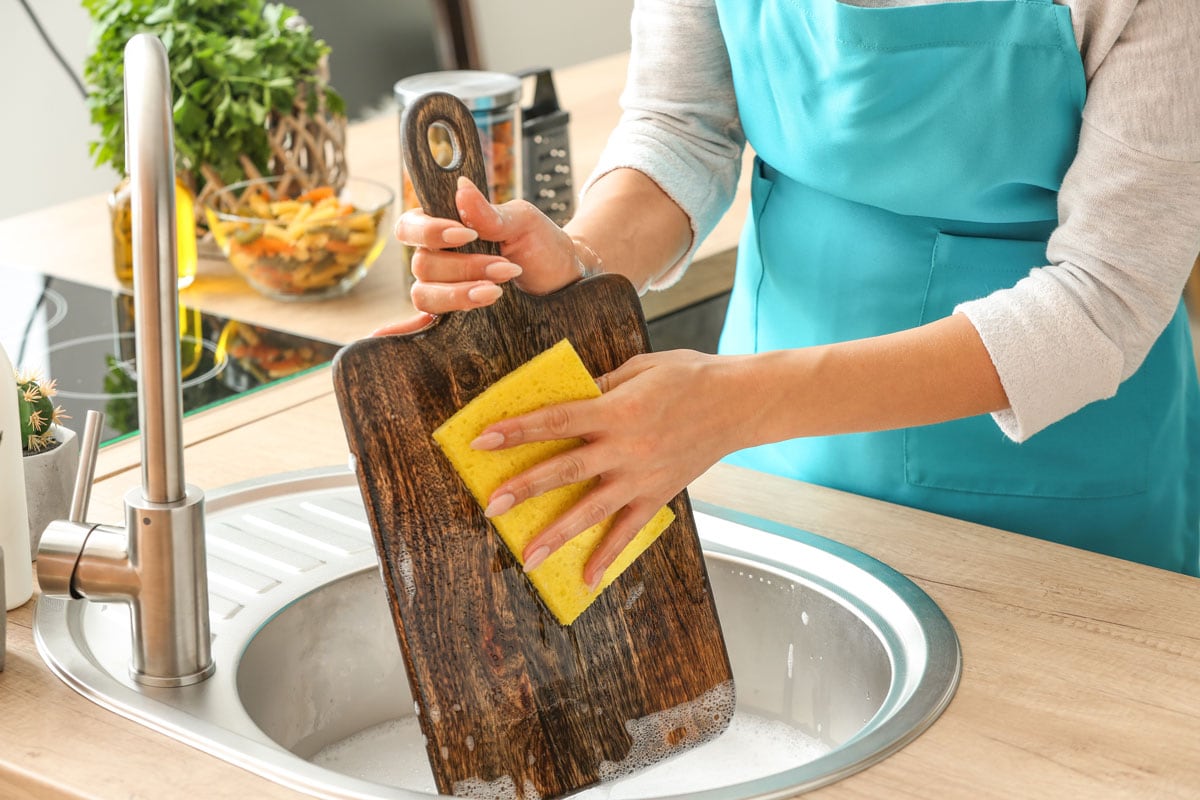
When you wash a wooden cutting board, keep the cleaning simple. You can use hot water, a sponge, and soap to remove stubborn grime. Then, to finish it off, quickly rinse it with cold water.
Of course, you don't want to leave it wet for an extended period. So, take a towel and pat it dry. It may still feel wet afterward. At this point, set the cutting board on its side and let it air dry.
In Closing
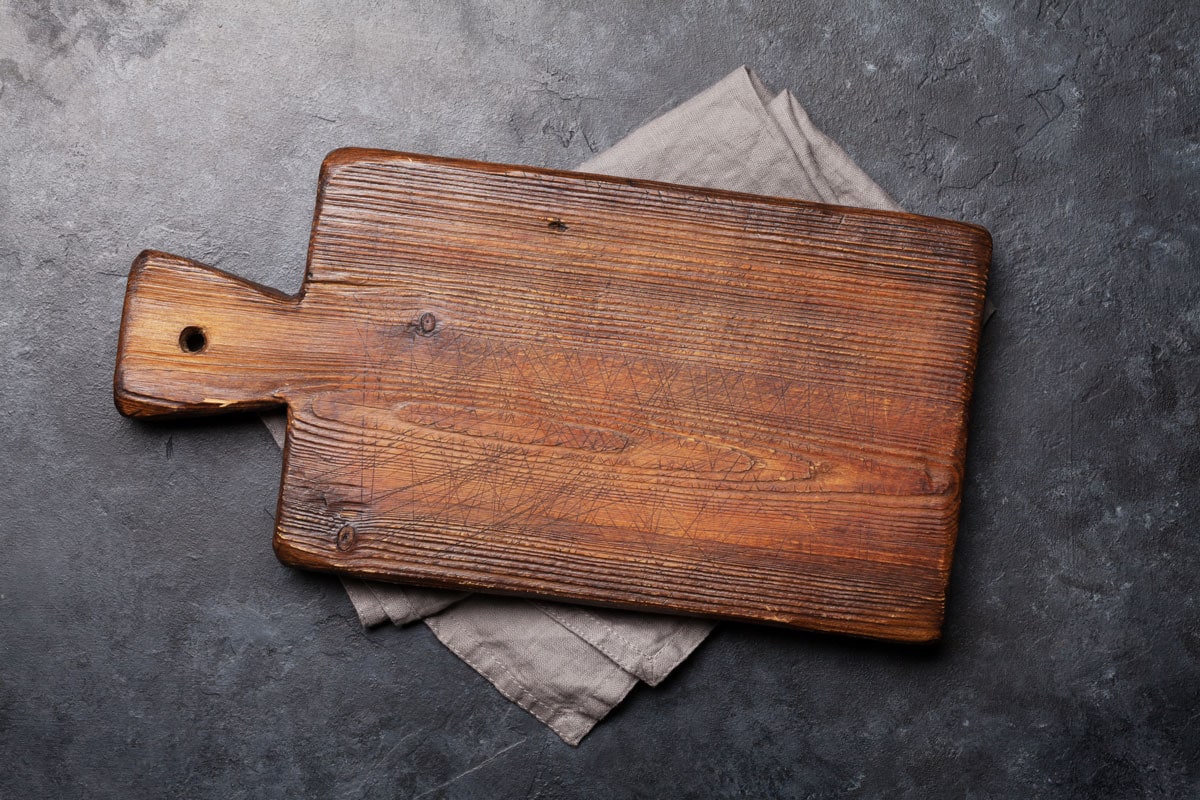
Bare wood and moisture are a no-no. As we've found, exposure to moisture causes wooden cutting boards to splinter. You can prevent this by applying a new coat of mineral oil a few times a year. We hope you found this informative!
Before you go, do you have other wooden cutting board concerns? Are you worried about the bacteria it can hold? To learn more, check out:
Does A Wood Cutting Board Hold Bacteria?
Here are other wooden cutting board topics you can check out.
Does A Cutting Board Need To Be Oiled?
What Oil Is Best For Butcher Block Or A Cutting Board?


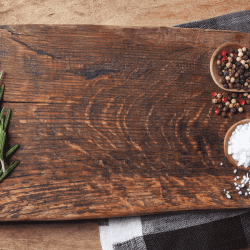

![Raw meat assortment - beef, lamb, chicken on a wooden board, Can You Cut Meat On A Wood Cutting Board? [Raw And Cooked]](https://kitchenseer.com/wp-content/uploads/2021/06/Raw-meat-assortment-beef-lamb-chicken-on-a-wooden-board-250x250.jpg)
